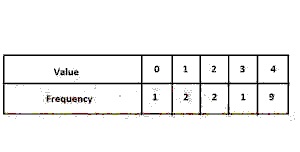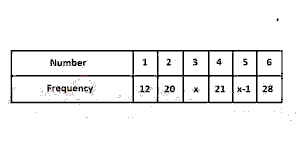2003 - JAMB Mathematics Past Questions and Answers - page 2
11
If y = 3 sin(-4x), dy/dx is
A
12x cos (4x)
B
-12x cos (-4x)
C
-12 cos (-4x)
D
12 sin (-4x)
Ask EduPadi AI for a detailed answer
Share this question
12
Determine the maximum value of y = 3x2 - x3
A
zero
B
2
C
4
D
6
Ask EduPadi AI for a detailed answer
Share this question
13
BY how much is the mean of 30, 56, 31, 55, 43 and 44 less than the median?
A
0.75
B
0.50
C
0.33
D
0.17
Ask EduPadi AI for a detailed answer
Share this question
14
The range of 4, 3, 11, 9, 6, 15, 19, 23, 27, 24,21 and 16 is
A
16
B
21
C
23
D
24
Ask EduPadi AI for a detailed answer
Share this question
15

A
1
B
2
C
3
D
4
Ask EduPadi AI for a detailed answer
Share this question
16
On the pie chart, there are four sectors of which three angles are 45o, 90o and 135o. If the smallest sector represents N28.00, how much is the largest sector?
A
N96.00
B
N84.00
C
N48.00
D
N42.00
Ask EduPadi AI for a detailed answer
Share this question
17
If nP3 - 6(nC4) = 0, find the value of n
A
5
B
6
C
7
D
8
Ask EduPadi AI for a detailed answer
Share this question
18
Find the number of committees of three that can be formed consisting of two men and one woman from four men and three women
A
3
B
6
C
18
D
24
Ask EduPadi AI for a detailed answer
Share this question
19
A bag contains 5 blacks balls and 3 red balls. Two balls are picked at random without replacement. What is the probability that a black and red balls are picked?
A
15/28
B
13/28
C
5/14
D
3/14
Ask EduPadi AI for a detailed answer
Share this question
20

A
19
B
20
C
21
D
22
Ask EduPadi AI for a detailed answer
Share this question